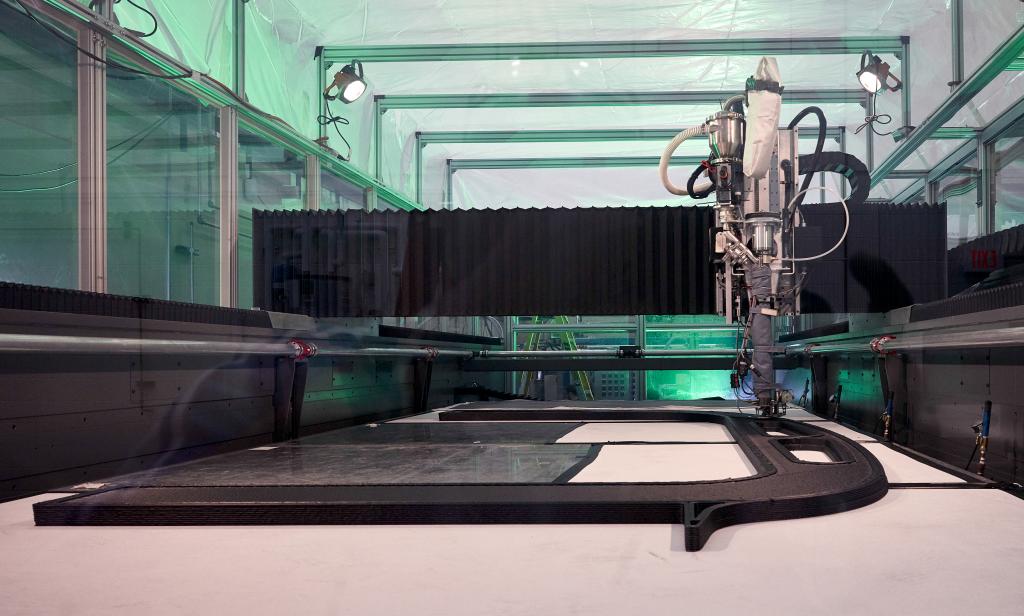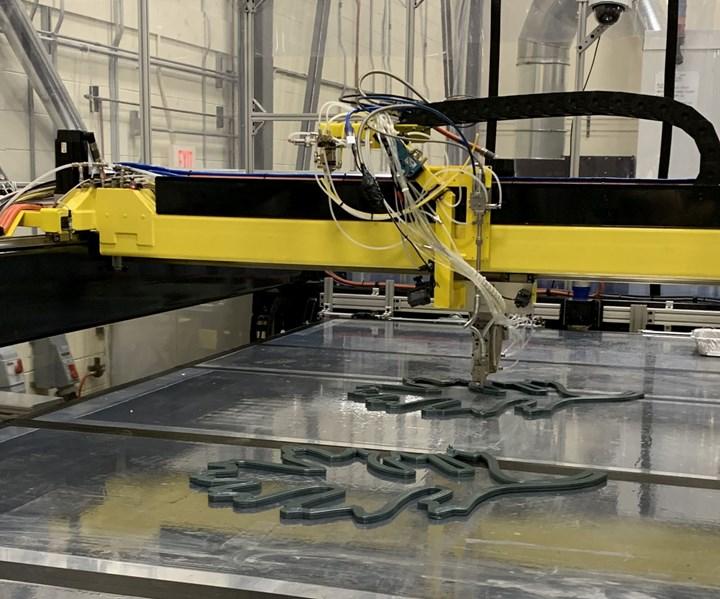
Thermoplastics
Big Area Additive Manufacturing – Big Area Additive Manufacturing (BAAM) is a large-scale, 3D printing technology developed by the Department of Energy’s Manufacturing Demonstration Facility at ORNL and Cincinnati, Inc. The ability to quickly and cost-effectively manufacture unique molds and tools is currently one of the most significant applications of BAAM.
Injection Molding – Injection molding produces parts by injection molten materials into a mold and can be performed with a variety of materials including thermoplastic and thermosetting polymers. ORNL researchers successfully produced carbon fiber injection molded automotive fenders using ORNL’s textile-based carbon fiber.
Compression molding – Compression molding places preheated molding material in an open, heated mold cavity. As a high-volume, high-pressure method, compression molding is suitable for use in complex, high-strength fiberglass reinforcements. ORNL research uses compression molding to develop lightweight parts for the automotive industry.

Thermosets
Sheet molding compound – Sheet molding compounding is ready to mold glass-fiber reinforced polyester materials used in compression molding. ORNL is researching pyrolysis-based recycling of sheet molding compounds to recover glass fiber for reuse. Ongoing research includes studying the mechanical properties of glass fiber.
Thermoset additive manufacturing – ORNL researchers work with Reactive Additive Manufacturing (RAM), the world’s first large-scale thermoset additive manufacturing machine that enables the 3D printing of thermoset materials for prototype and production parts. Through RAM, researchers are able to produce large-scale parts, in various resolutions.
Prepreg molding – Prepeg molding uses reinforcement materials that have been pre-filled with either a thermoset or plastic resin. ORNL researchers use prepeg molding to develop lightweight parts for the automotive industry.

